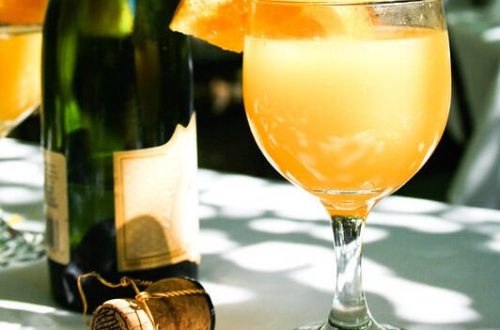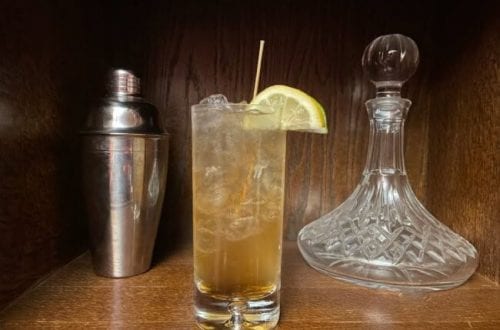
Wine School 101
The bar offers people drinks containing alcohol, right. Well sometimes people want to class the joint up a bit by ordering from the wine menu. So, you better have enough wine knowledge to handle whatever wines you offer by the glass. This article will be a wine cheat sheet of sorts and will not go into much depth concerning the best years for a certain varietal from a particular country or region. No, this will be a general guide for the most common wines served by the glass across the United States of America. Six white and four red still table wines are covered. There will be no mention of bubbly champagnes or fortified ports. Included will be the wine’s appearance, sweetness level, place of origin, and most common tasting notes. A wine’s body will be listed which indicates its intensity level from light to rich.
Wine is simply fermented grape juice. The history of fermenting grapes into alcohol dates back thousands of years. Today when grapes do not contain enough of their own yeast to ferment, cultured yeast may be added. Grapes turn into wine in two or three weeks during which most of the natural sugars have turned into alcohol with the remainder slowly converting over the next few months. The amount of natural sugar leftover after fermenting will determine where the wine falls along the spectrum of sweetness. This spectrum of sweetness includes bone-dry, dry, off-dry, medium-sweet, and sweet, and is the most referenced characteristic for comparing wines. Another characteristic would be a wine’s acidity which influences how tart a wine will taste. Generally, light-bodied wines tend to be less sweet and highly acidic while fuller-bodied ones are more sweet and less acidic. After four to six months, most wines are ready to be bottled while others are set in casks to be aged further. Most wines are a blend of two or more grapes, referred to as varietals, even where one grape is dominant. This guide draws from a wonderful wine reference book put out by winefolly.com called Wine Folly the Master Guide. If you want a fun, easily readable and authoritative wine reference, grab a copy of it here!
White Wines by the Glass
Any grape is fine for producing white wine so long as the skin is removed, and only the juice is fermented.
Sauvignon Blanc – Light White Wine
Body: Low Intensity
Sweetness: Dry
Most Commonly From: California’s Sonoma and Napa Valley
Possibly From: Chile’s Central Valley (These include intense citrus flavors such as Lime and Grapefruit)
Tasting Notes: White Peach, Buttered Bread, Lemongrass, and Saline
Chardonnay – Light to Full White Wine
Body: Medium Intensity
Sweetness: Off-Dry
Most Commonly From: California’s Napa Valley, Sonoma County, Mendocino County, and Central Coast
Tasting Notes: Vanilla, Butter, Mango, Almond Crème, Caramel, and Baked Pear
Pinot Grigio – Light White Wine
Body: Low Intensity
Sweetness: Medium-Sweet
Most Commonly From: Italy’s Veneto, Friuli-Venezia Giulia, and Trentino-Alto Adige Regions
Possibly From: Oregon’s Willamette Valley
Tasting Notes: White Peach, Lemon Zest, Raw Almond, Cantalope, Crushed Gravel, Clove, and Honeysuckle
Rose – Pale Pink to Light Red Wine
Body: Low Intensity
Sweetness: Off-Dry
Most Commonly From: California’s Central Coast
Possibly From: France’s Provence Region
Tasting Notes: Strawberry, Cherry, Clean Linen, Melon, Citrus Zest, and Pepper.
Riesling – Aromatic Light White
Body: Low Intensity
Sweetness: Sweet
Most Commonly From: Germany’s Pfalz, Rheingau, and Mosel Regions
Possibly From: Washington State’s Columbia Valley or France’s Alsace Region
Tasting Notes: Apricot, Beeswax, Petroleum, Wet Slate, Meyer Lemon, Lime, Green Melon, Apple, and Minerality
**Meyer Lemons are a hybrid citrus of mandarin oranges and lemons making them juicer and sweeter than regular lemons.
White Zinfandel – Pale Pink to Light Red Wine
Body: Low Intensity
Sweetness: Sweet
Most Commonly From: California’s Napa Valley specifically off the Sutter Homes Vineyards
Tasting Notes: Raspberry, Blackberry, Strawberry Crème, Light Citrus, and Melon
Red Wines by the Glass
Derives its coloring from red and black grapes’ skin being left on during fermentation.
Pinot Noir – Light Red Wine
Body: Low Intensity
Sweetness: Dry
Most Commonly From: California’s Sonoma, Mendocino, and Santa Clara Counties
Possibly From: Oregon’s Willamette Valley or Canada British Columbia
Tasting Notes: Raspberry, Strawberry, Cherry, Clove, Allspice, and Vanilla
Merlot – Medium Red Wine
Body: Medium Intensity
Sweetness: Dry
Most Commonly From: California’s Sonoma and Napa Valleys
Possibly From: Washington State’s Columbia Valley (Their High Acidity creates a Light-Bodied Merlot)
Tasting Notes: Plum, Cherry, Vanilla, Chocolate, Dried Herbs, and Mint
Cabernet Sauvignon – Full Red Wine
Body: High Intensity
Sweetness: Dry
Most Commonly From: California’s Sonoma and Napa Valley
Possibly From: Washington State’s Columbia Valley and Red Mountain
Tasting Notes: Black Cherry, Blackberry, Cassis, Cedar, Graphite, and Hint of Tobacco
Malbec – Full Red Wine
Body: High Intensity
Sweetness: Off-Dry
Most Commonly From: Argentina’s Mendoza, San Juan, and La Rioja Regions
Tasting Notes: Blackberry, Red Plum, Spice, Bitter Dark Chocolate, and Sweet Tobacco
Now take this new wine knowledge and fill up that tip jar!





